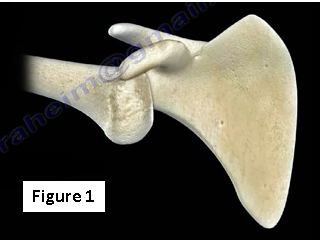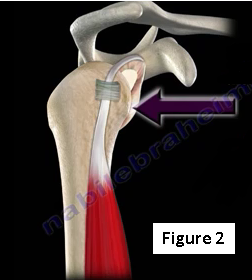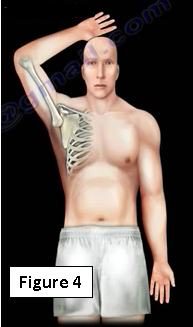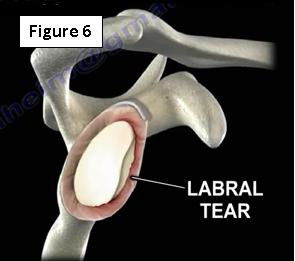Shoulder dislocations can occur in different types. Anterior dislocation is seen in more than 95% of cases involve a shoulder dislocation (Figure 1). The head of the humerus lies anterior to the glenoid. It is often found with a combination of labral tear, greater tuberosity fractures or fractures of the humeral head called Hill-Sachs Lesion.

Posterior dislocations are usually associated with seizures or electrical shock and are often missed on radiographs. With posterior shoulder dislocations, there is a lack of external rotation movement at the shoulder joint. Posterior dislocations will dislocate straight posterior, only 5% of shoulder dislocations are posterior (Figure 2)

The main complication with an anterior dislocation is recurrence in the young, and a cuff tear in the elderly. The main complication with a posterior dislocation is that it is missed.
An inferior dislocation of the shoulder is rare. Less than 1% of the cases are inferior and the dislocation occurs by an abduction force where the humerus abuts the acromion and the humeral head is delivered out of the inferior glenoid (Figure 3).

The position of the arm is overhead with the shoulder in full abduction and the elbow is usually flexed (Figure 4). The patient’s arm is stuck, mimicking The Statue of Liberty.

Neurovascular problems are common, especially injury to the axillary nerve, but injury usually resolves itself spontaneously (Figure 5). The physician will examine the patient before and after manipulation of the dislocation.

Other associated injuries are common, such as a greater tuberosity fracture, tears of the rotation cuff (more common in the elderly), or a labral tear (Figure 6).

Treatment
To treat an inferior shoulder dislocation the physician will do a closed reduction and immobilization. Surgery may be needed for a repair or reconstruction of the cuff and the labrum. This injury is interesting, unique and rare.
For more information on shoulder dislocations, follow the links below:
For more information, visit my YouTube Channel
